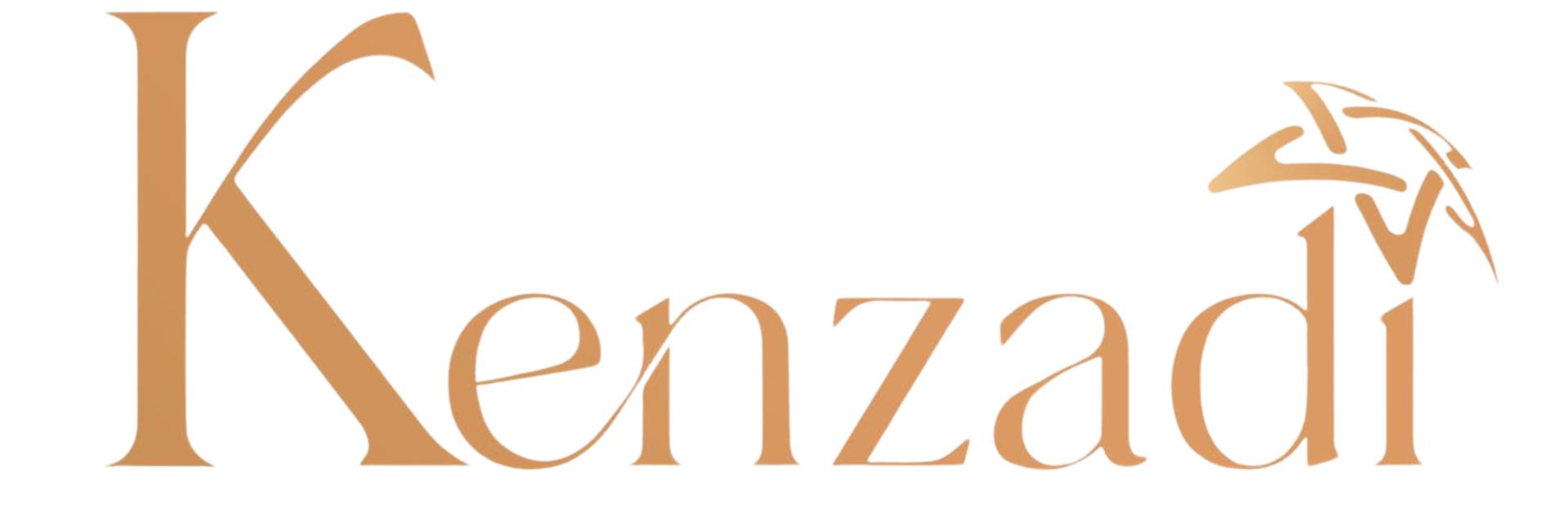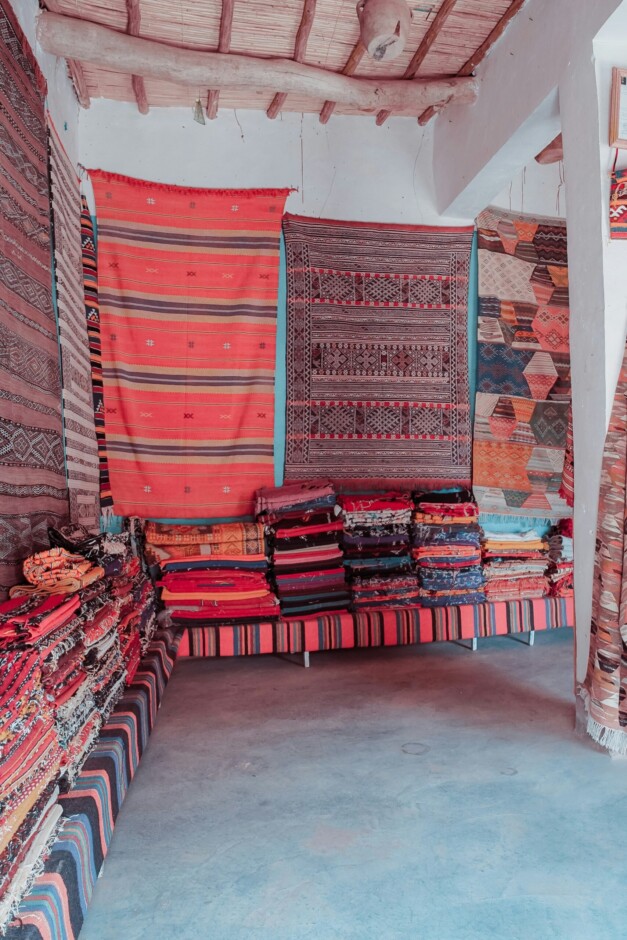How to Fill a Moroccan Leather Pouf Cover by Kenzadi
Introduction to Moroccan Leather Poufs Moroccan leather poufs are distinctive and culturally rich decorative pieces that have garnered appreciation worldwide for their intricate craftsmanship and vibrant aesthetic appeal. Originating from Morocco, these poufs are traditionally handcrafted by skilled artisans using genuine leather, often embellished with detailed embroidery and vibrant colors that reflect the country’s diverse heritage. The history of leather poufs dates back centuries, serving not only as functional seating but also as a symbol of Moroccan artistry and cultural expression. The significance of Moroccan poufs extends beyond mere decoration; they embody the warmth and hospitality characteristic of Moroccan culture. Traditionally used in homes and gathering spaces, these poufs invite community interaction and relaxation, making them a staple in both past and contemporary settings. In modern decor, the versatility of these leather poufs has led to their widespread adoption in various interior design styles, from bohemian chic to modern minimalism.…
Pitted vs Whole Medjool Dates: Understanding the Key Differences
Introduction to Medjool Dates Medjool dates, often referred to as nature’s candy, originate from the palm trees of the Middle East and North Africa. Known for their large size, soft texture, and rich caramel-like flavor, these dates have become increasingly popular worldwide. Medjool dates not only possess unique physical characteristics but also offer remarkable nutritional benefits that contribute to their growing appeal as a healthy snack and an ingredient in numerous culinary applications. Historically, Medjool dates have been treasured for their natural sweetness and energy-boosting properties. Traditionally cultivated in Morocco, these dates are now grown in various regions, including California and the Arabian Peninsula, where climates are optimal for date palm cultivation. The fruit plays a significant role in Middle Eastern culture, often served during festive occasions and incorporated into traditional dishes. Furthermore, the versatility of Medjool dates allows them to enhance both sweet and savory recipes, making them a…
The Art of Crafting Argan Oil: A Journey through Marrakech, Morocco
Understanding Argan Oil: Origins and Benefits Argan oil, a valued product derived from the nuts of the Argan tree (Argania spinosa), boasts a rich historical tapestry woven into the cultural fabric of Morocco, particularly in the Marrakech region. This unique tree is indigenous to the semi-arid areas of southwestern Morocco, serving as a crucial resource for local communities. The extraction of argan oil has traditionally been a communal activity, typically performed by women, making it a significant element of social structure and economic empowerment in Moroccan society. Its production methods, entrenched in artisanal practices, have been passed down through generations, representing both heritage and livelihood. The benefits of argan oil extend beyond its cultural significance; it is renowned for its extensive applications and effectiveness in various domains, particularly in skincare and haircare. Rich in essential fatty acids, antioxidants, and vitamin E, argan oil is celebrated for its hydrating properties. When…
The Art of Moroccan Leather Ottoman Poufs: A Journey Through Marrakech
Introduction to Moroccan Leather Ottoman Poufs Moroccan leather ottoman poufs represent a unique blend of artistry and functionality, deeply rooted in the cultural fabric of Morocco. These poufs, often crafted from rich, dyed leather, are not just furnishings; they are pieces of art that tell a story of Moroccan heritage. Originating from the vibrant markets of Marrakech, these handmade items reflect the rich traditions of the region’s artisans, who have honed their skills over generations. The craftsmanship involved in creating Moroccan leather ottoman poufs is meticulous. Artisans typically use natural leather, which is prized for its durability and softness. The leather is often dyed using traditional methods that utilize natural pigments, resulting in a spectrum of vivid colors and patterns. The attention to detail can be seen in the intricate stitching and embroidery, which often includes geometric designs, a hallmark of Moroccan aesthetics. Traditionally, ottoman poufs served multiple purposes in…
The Refreshing Benefits of Moroccan Mint: A Dive into Moroccan Tea
Introduction to Moroccan Mint Moroccan mint, known scientifically as Mentha spicata, is a variety of spearmint that thrives in the North African region, particularly in Morocco. This particular mint is characterized by its vibrant green leaves, which possess a distinctive flavor that is both sweet and refreshing, setting it apart from other mint varieties such as peppermint. The cultivation of Moroccan mint has been integral to Moroccan agriculture for centuries, echoing its deep-rooted significance in the cultural fabric of the nation. In Moroccan culture, mint is not merely a culinary herb; it symbolizes hospitality and generosity. The traditional Moroccan tea, known as “Moroccan mint tea” or “atai,” is a social ritual that showcases the role of mint in the daily lives of Moroccans. This beverage is typically brewed with green tea, copious amounts of sugar, and, predominantly, fresh Moroccan mint. The process of preparing this refreshing tea often involves a…
The Artistry of Hand-Made Moroccan Beni Ouarain Carpets: A Journey Through Marrakech
The Heritage of Beni Ouarain Carpets Beni Ouarain carpets possess a rich history that is deeply intertwined with the Berber tribes residing in the Atlas Mountains of Morocco. Originating from the village of Beni Ouarain, these carpets reflect the cultural, social, and artistic heritage of the Berber people. The artisans, predominantly women, intricately weave these carpets using traditional methods that have been passed down through generations. Each piece is crafted with care, representing the skills honed over centuries. The Beni Ouarain carpets are primarily made from natural wool sourced from local sheep, characterized by their strength and warmth. The weaving process employs a technique known as knotting, which allows artisans to create intricate patterns and textures. The simplicity and boldness of these designs encapsulate the essence of Berber identity and ancestral traditions. Many carpets feature geometric shapes and earthy tones that draw inspiration from the surrounding landscapes, further embedding the…
Exploring the Art of Moroccan Tea Trays from Fes
The Cultural Significance of Moroccan Tea Trays Moroccan tea trays hold a significant place in the rich tapestry of the nation’s culture, particularly in the historic city of Fes. In Moroccan society, the act of sharing tea transcends mere refreshment; it is a ritual imbued with hospitality and tradition. The preparation and serving of mint tea is a symbol of welcoming guests, reflecting a longstanding cultural ethos that values community and connection. The tea ceremony itself is a meticulously timed process, showcasing not only the beverage but also the tools and objects that accompany it, namely the elegantly designed tea trays. The craft of creating these tea trays is steeped in history and artistry, with artisans employing a range of traditional materials such as metal, wood, and ceramic. Each tray often features intricate designs that tell a story, embodying various elements of Moroccan culture and heritage. The city of Fes,…
The Art of Pompom Blankets: Craftsmanship from Marrakech, Morocco
Introduction to Artossi and their Pompom Blankets Artossi.com is a distinctive brand originating from the vibrant city of Marrakech, Morocco, celebrated for its exquisite handcrafted pompom blankets. These blankets hold significant cultural value, representing not only the artisan’s skill but also the rich heritage of Moroccan craftsmanship. The artistry of pompom blankets is deeply rooted in Moroccan traditions, where textiles are often adorned with colorful embellishments, symbolizing warmth and hospitality, attributes deeply embedded in Moroccan culture. The aesthetic appeal of Artossi’s pompom blankets is undeniable. Each piece showcases a stunning array of colors, textures, and patterns, reflecting the lively spirit of Marrakech. The blankets are often made from high-quality materials, such as wool and cotton, ensuring both durability and comfort. The intricate design process involves skilled artisans who pour their creativity and dedication into every stitch, resulting in unique pieces that can serve as both functional items and decorative accents…
Exploring Moroccan Essential Oils: The Arganit Brand Experience
The Essence of Morocco: What is Argan Oil? Argan oil, often referred to as “liquid gold,” is a remarkable oil extracted from the nuts of the Argan tree (Argania spinosa), which is native to Morocco. This unique tree thrives in the semi-arid regions of the country, particularly in the southwest, where it has become an integral part of Moroccan culture and lifestyle. The extraction process involves cracking open the hard-shelled nuts, which contain one to three oil-rich seeds, and pressing them to yield the oil. This labor-intensive process has traditionally employed local Berber women, reflecting the oil’s cultural significance and its role in supporting local economies. The nutrient profile of Argan oil is what sets it apart. Rich in essential fatty acids such as oleic and linoleic acids, as well as high levels of Vitamin E and antioxidants, Argan oil offers a plethora of benefits for both skin and hair.…







